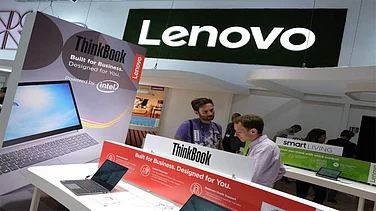I have a bone to pick with Asus. It doesn’t have to do with the Vivobook S14 that I’m currently reviewing, but with the company as a whole. But, I’ll get to that later. For now, I’ll just tell you that Asus has another winner on its hands, despite having cut down in one key area (which is why I’m angry at Asus). The Vivobook S14, powered by Qualcomm’s internals, is a fantastic device for everyday users, such as students or individuals working behind a desk at an office. Yes, it beats out the likes of Lenovo, Dell, and HP because it is a well-rounded product, at an affordable price, with excellent battery life.
With a price of Rs 74,990, the Vivobook S14 is by no means expensive. Weighing in at 1.39kg, this 14-inch laptop is a touch on the heavier side. Yes, I’m very used to lighter laptops these days. With the Vivobook S14, you’re getting all the ports you’d need. There are 2 USB 3.2 Gen 1 Type-A ports, 2 USB 3.2 Gen 1 Type-C ports, a full-sized HDMI port, and a 3.5mm audio jack combo. Yes, there’s no microSD slot, but one can’t complain.
Let’s dive in.
Design & Display
The Vivobook S14 has a metallic chassis, a classic and simple design, and little to no flex with the display. Yes, this design can get coated with smudges, but it’s easy to clean. The lid is subtle, with just the logo on the left-hand side.
There’s a 14-inch FHD+ IPS panel (1920x1200) with a 16:10 display. And here’s where I will pick my bone with Asus. The company used to be all-in on OLED displays and now it seems to be turning back on that goal. OLEDs are much better in terms of blacks and provide for an overall better experience. OLEDs may consume more power but they’re still miles ahead of IPS panels. Anyway, enough of that, let’s get back to the Vivobook S14.
Nonetheless, the IPS panel on the Vivobook S14 is rated for 300 nits of brightness. Colours are natural, and the laptop can be used in the outside sunshine. The 16:10 aspect ratio is a bone for us journalists as it gives us more real estate to work with. It’s not perfect for photo editing, but at this price point, I’ll take it. Viewing angles are good, but the refresh rate is limited to 60Hz.
The only other thing I’ll ding Asus for is that the bezels were not at all thin. The top bezel is thicker, to accommodate the IR webcam (for Windows Hello support). There is a physical shutter button. The webcam, for what it’s worth, is just about passable for daily video calls. Windows Hello though was a major pain point. If I wasn’t looking at the webcam, at the right time, with the right lighting, it would always fail to open.
Snapdragon for the Win
Asus knows its target audience well. The amount of research that goes into the conceptualisation of a product is a lot. The Snapdragon X chip in the Vivobook S14 is a perfect combination of efficiency and performance. With a Rs 74,990 laptop, one shouldn’t be asking for the moon. And for someone like me, who mostly just writes and edits documents along with browsing the web for research, editing photos, and watching way too many videos, I can’t complain.
In daily usage, I didn’t feel the laptop slowing down even for a second. There were the occasional sessions where Chrome would hang, but that’s par course for any laptop in this price segment.
The only time there was a bottleneck was when I was playing some fairly demanding games. There’s no dedicated GPU here, and so gaming is limited, but the laptop did heat up when I was attempting to play a few games. The fans do get loud, but it’s more of a hiss than a whir.

Keyboard and Touchpad
I’ll keep it short because there isn’t anything to write home about. Yes, the keyboard and touchpad were good, and better than I expected. Saying that, I’ve had better typing experience in many other Asus laptops, and that’s why I say it was just fine, and nothing else. I did get used to the keyboard after a while.
Battery
With a 70Wh battery, I managed to eke out seven to eight hours of battery life on a single charge. This was with Wi-Fi on, display set at 60% brightness, I like that Asus has now ditched the proprietary charging port! Hallelujah. You now get to charge your laptop via the USB-C port (there is a 65W adapter included in the box).
Verdict
The Vivobook S14 does a good job of catering to its target audience in this price segment. It’s a well thought out laptop for the common office commuter. Yes, I said it beats out similar laptops from Dell, HP, Lenovo, and others, and I’m sticking to that. It's a solid build (yes, I dinged it a few times but no scratches showed up), good battery life, doesn’t throttle or heat up, a decent typing experience, and all the ports you’d need for day-to-day tasks.
The Vivobook S14 (S3407QA) is a laptop that plays it safe. By playing safe, Asus has been able to nail the basics. Don’t go looking for the moon with the Vivobook S14 and y be more than satisfied having it as your next daily driver.































